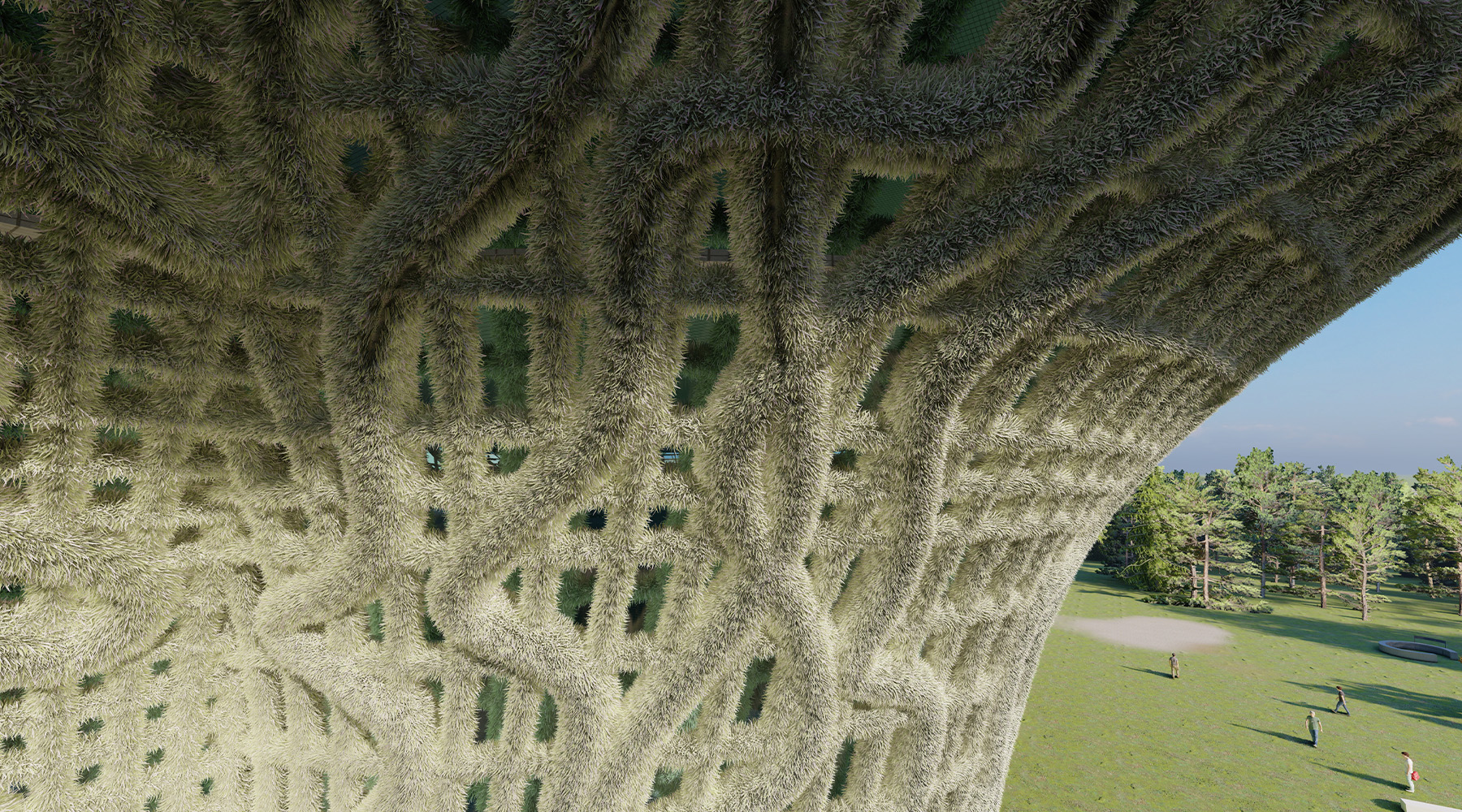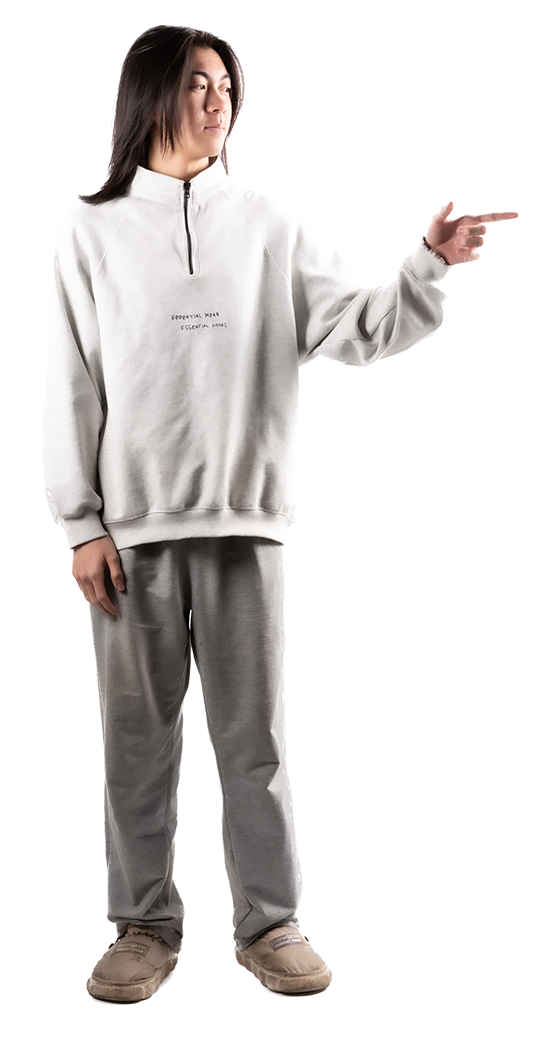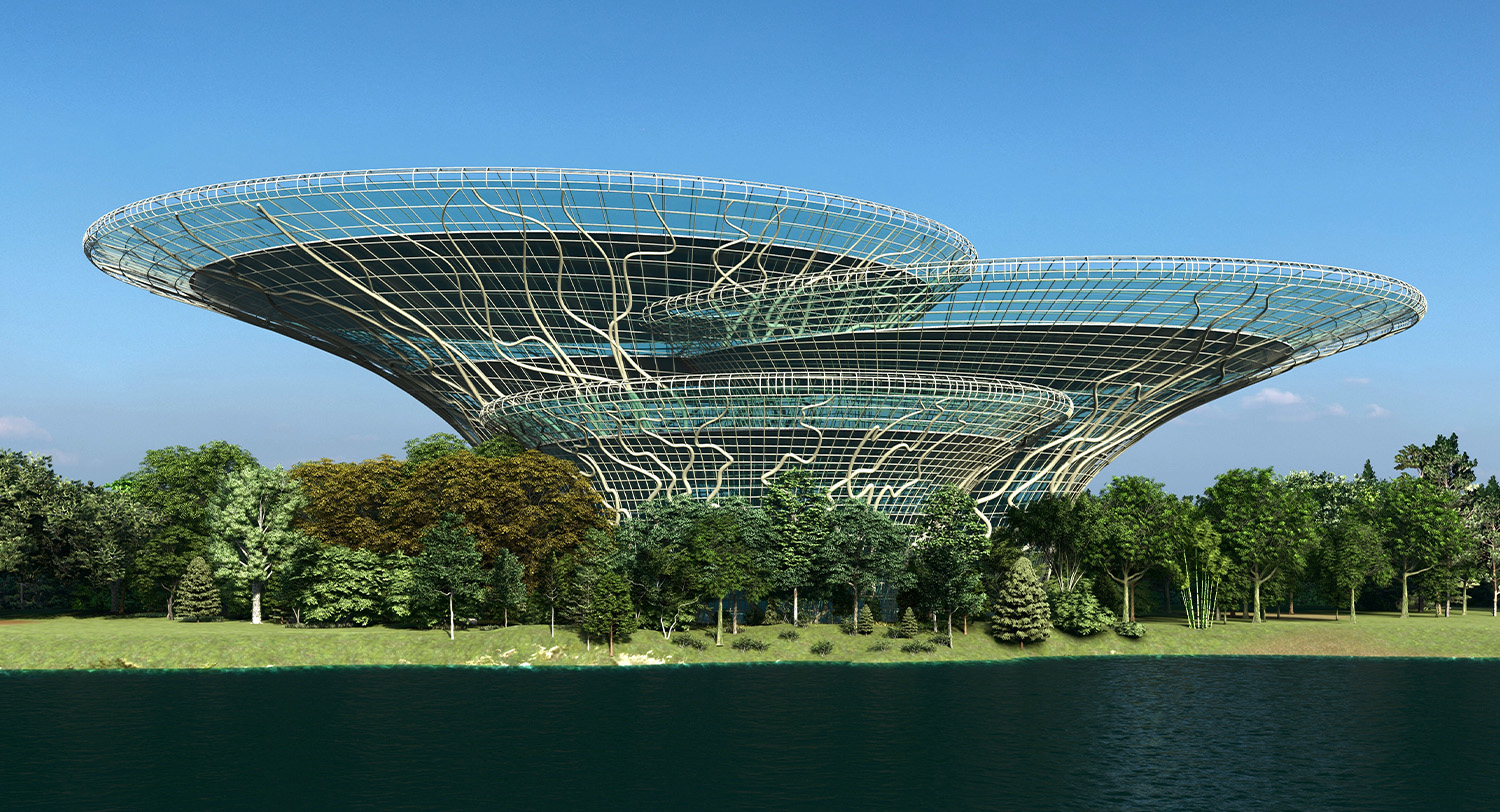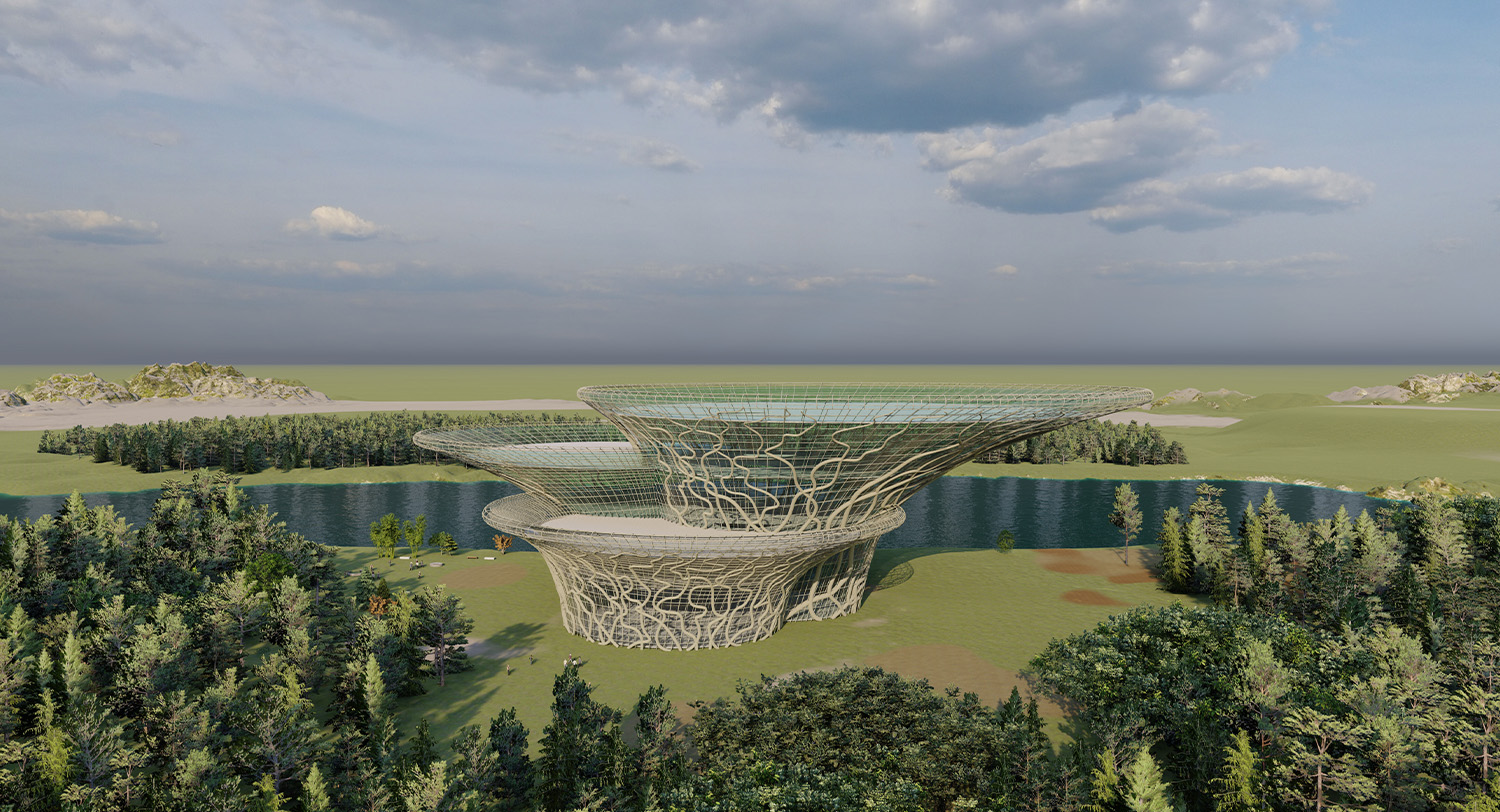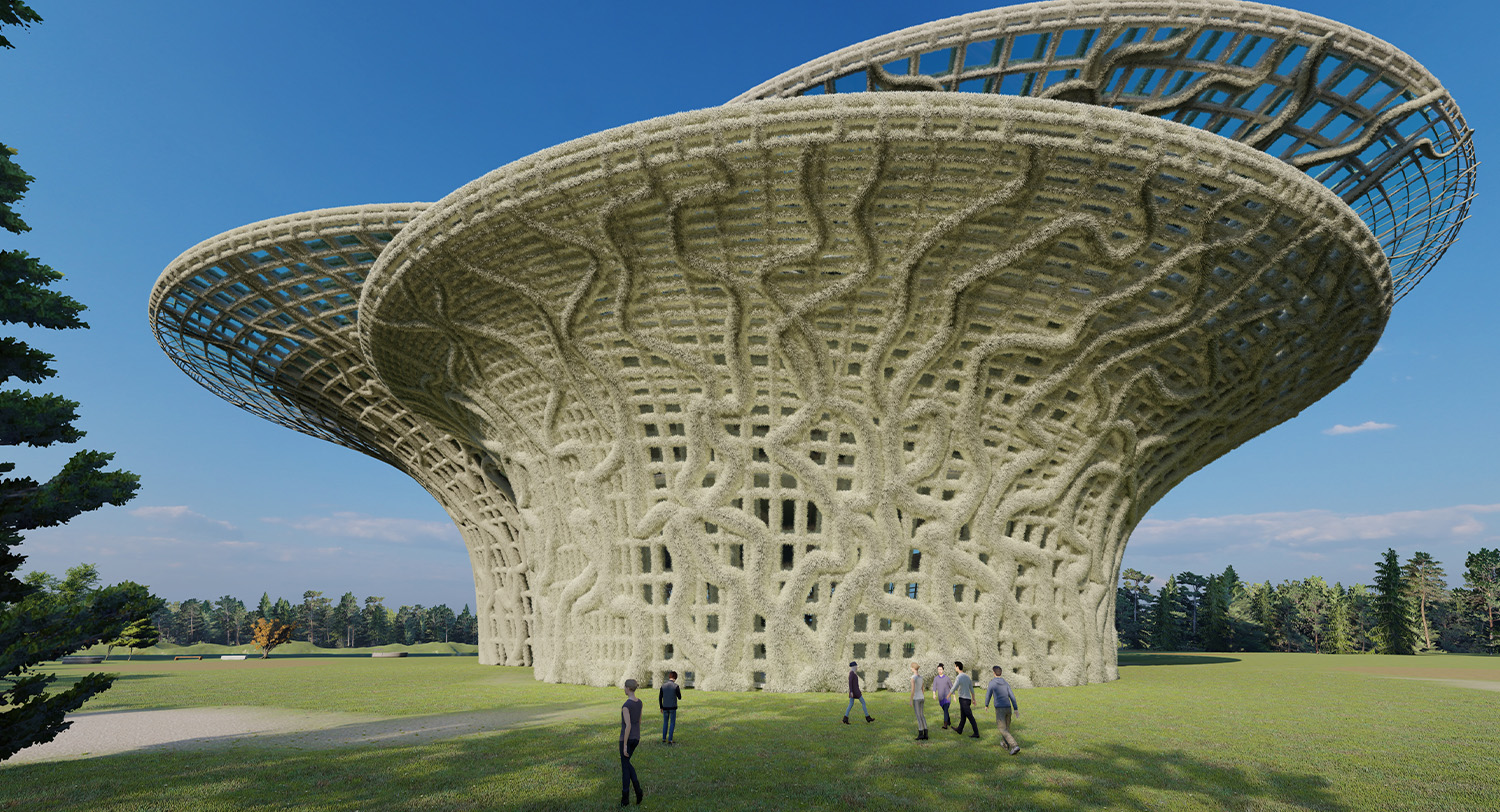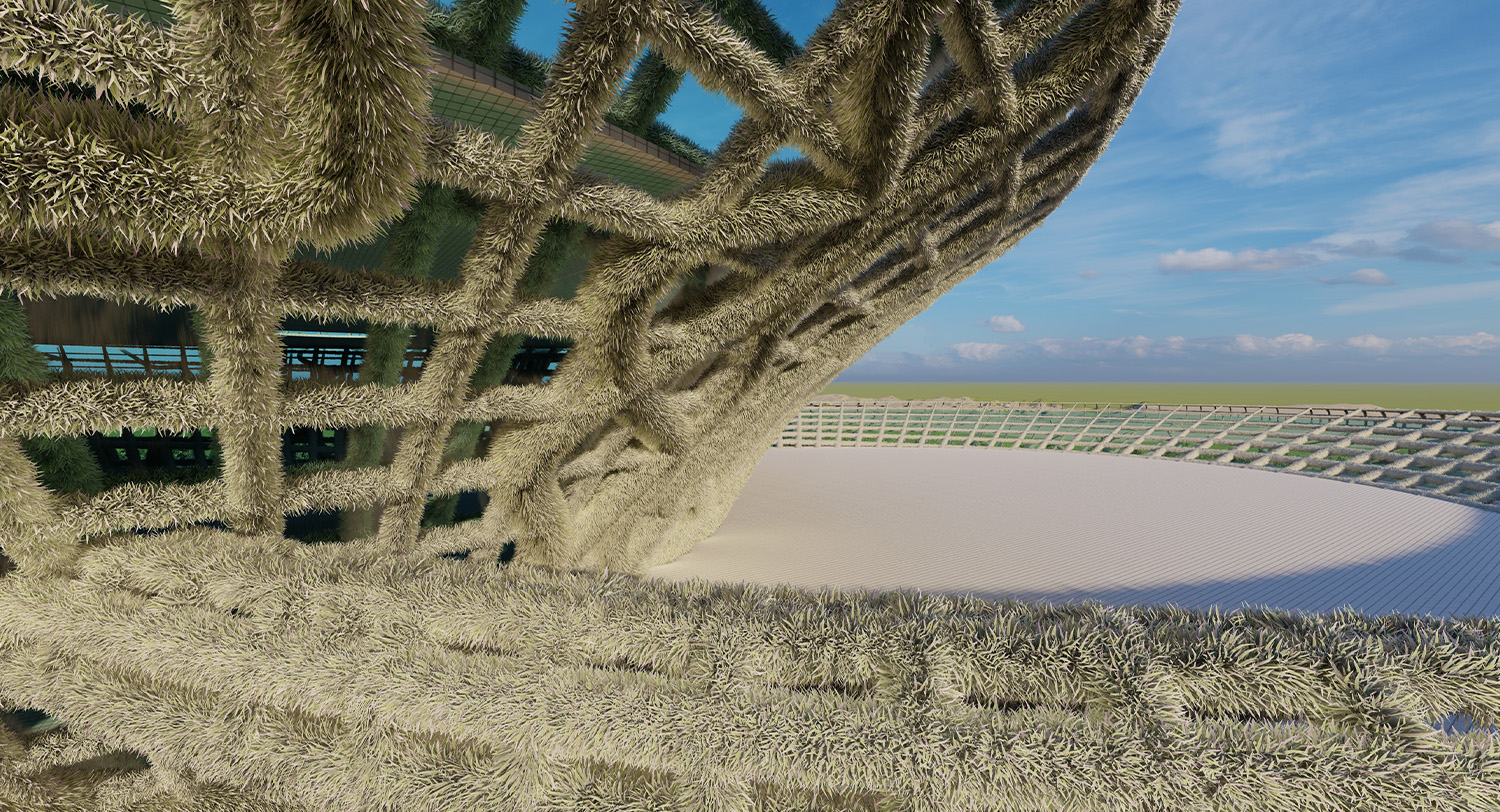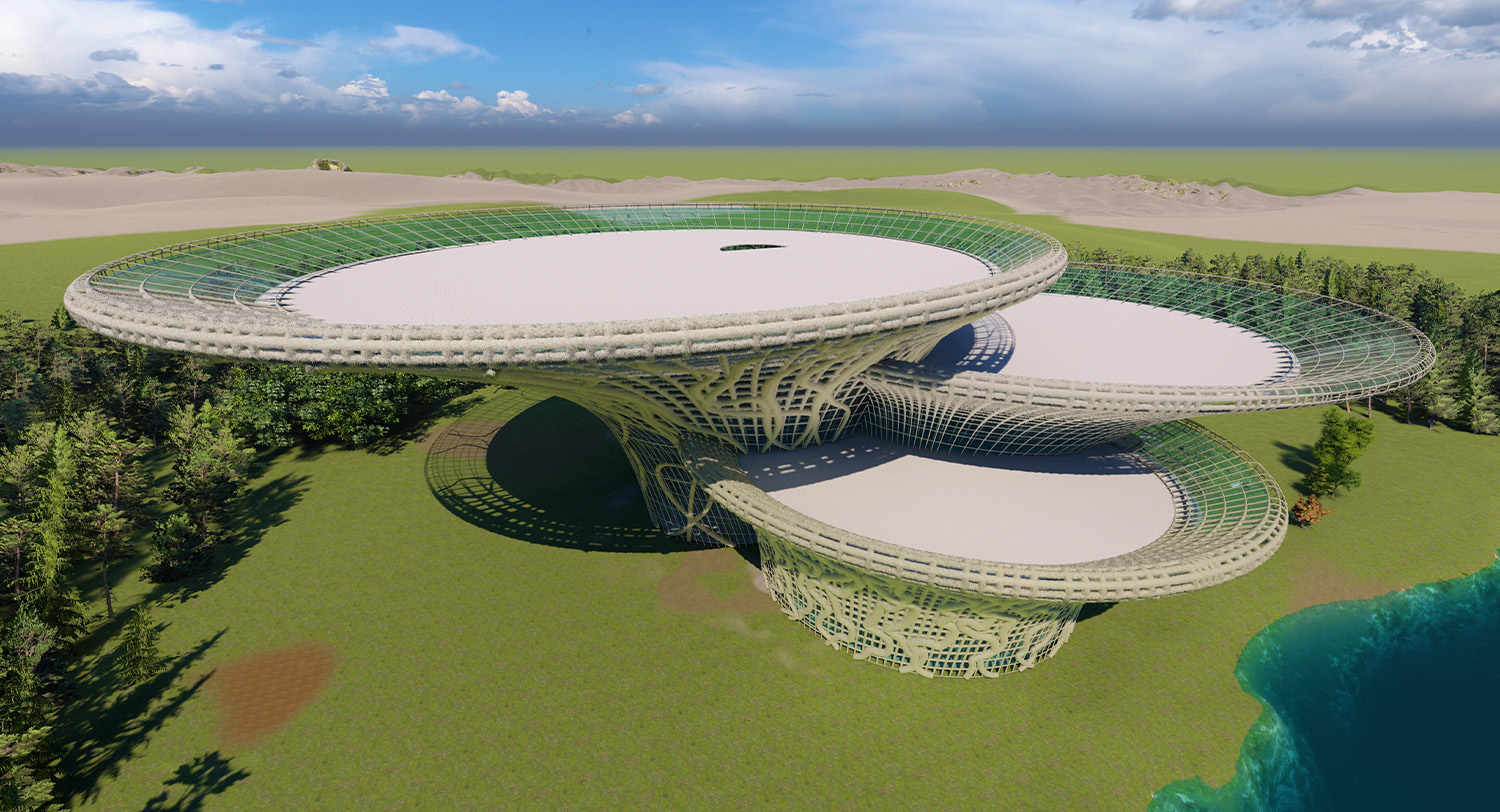作品故事
该项目来源于我对生活中常见的建筑物提出的问题:为什么建筑物都是人为形成的,为什么自然形成的都是景观而人类不能去居住。如果植物可以作为房屋的一种材料,或者建筑能自然生长而成会怎样?基于这些设想,在调研了Neri Oxman的蚕丝作品和Tomas saraceno的蛛丝作品后,我总结了蚕丝和蛛丝的共同点,最终选取了同样可以自主生长的真菌作为主要材料。真菌作为一种有机材料,数量众多、生长速度快且易于附着在物体表面,干燥之后也较为稳定。为了建筑稳固,建筑的构件多为水泥等无机物,树木在砍伐之后也失去了生命,而如果将真菌等可自生长的生物参与到建筑结构中,与建筑融合并共生,便可以大大缓解这些问题。同时菌类形成的有机材质有利于降价,可以使建筑变得更加环保,促进自然与人的和谐发展。
This project comes from my questions about the common buildings in daily life: why are all the buildings man-made, and why are all the naturally formed landscapes that humans cannot live in, so I propose that what if plants can be used as a material of architecture, or what if the buildings are naturally formed, so what if architecture are alive. After researching silk works by Neri Oxman and spider silk works by Tomas saraceno, I summarized the similarities between silk and spider silk, and finally chose fungi which can also grow autonomously as my main material. As a kind of organic material, fungi are abundant, grow quickly, attach easily to the surface of objects, and are stable after drying. For the stability of the building, the building components are mostly inorganic substances such as cement, and the trees also lose their lives after being cut down. If fungi and other self-growing organisms are involved in the building structure to integrate and symbiosis with the building, these problems can be greatly alleviated. At the same time, the organic material formed by fungi is conducive to the price reduction, can make the building become more environmentally friendly and promote the harmonious development of nature and human.

